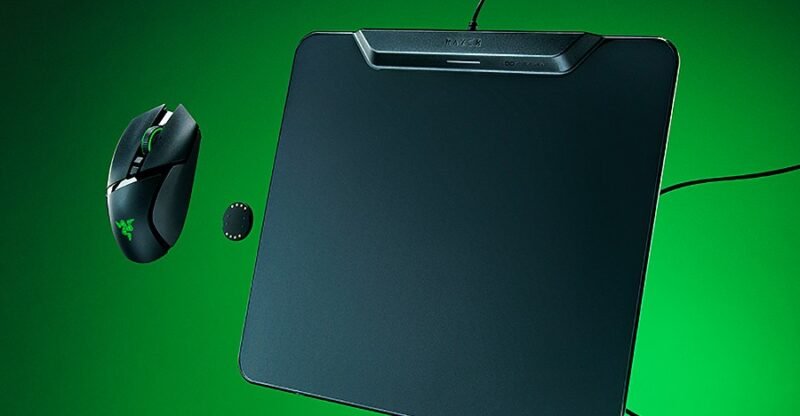Quick Takeaways
-
Product Versions and Pricing: The HyperFlux V2 Wireless Charging System is available in two versions for $119.99; one has a hard surface, while a softer cloth version will launch later this year.
-
Compatibility and Mouse Options: Unlike the original HyperFlux, the V2 does not come with a mouse but supports various Razer mice priced between $129.99 and $179.99, including the Basilisk V3 Pro and Naga V2 Pro.
-
Charging Mechanism: The new model uses a puck to wirelessly charge supported mice on the pad, offering a more efficient power solution compared to the original’s supercapacitor system.
- Enhanced Connectivity: The HyperFlux V2 also enables wireless connections for Razer devices to PCs via USB with HyperSpeed technology, although it doesn’t provide wireless charging for keyboards.
Innovative Charging Solutions
Razer’s HyperFlux V2 mouse pad represents a major advancement in technology. Priced at $119.99, it comes in two versions: a hard surface available now and a softer cloth surface expected later this year. This product stands out by allowing compatible mice to charge wirelessly while in use. The new version no longer requires a bundled mouse; instead, it is compatible with several Razer models, making it more accessible to consumers.
Previously, the original HyperFlux had a high price point of $249.99, bundled with the Mamba HyperFlux mouse. In contrast, the V2 offers a standalone solution that potentially lowers the barrier to entry for gamers and professionals alike. Transitioning from a supercapacitor-based system to a puck-based charging method improves functionality. Now, users receive a continuous charge without the limitations of a wired connection. Furthermore, an LED indicator shows battery levels, which adds user-friendly functionality.
Implications for Gaming and Beyond
The HyperFlux V2 does more than just charge; it serves as a receiver for Razer’s ecosystem, connecting mice and keyboards to computers using HyperSpeed technology. This connection offers speed and reliability, which many users seek in gaming and productivity platforms. While the mouse pad can connect Razer’s wireless keyboards, it does not charge them wirelessly, which may affect consumer choices.
This innovation paves the way for potential adoption in other areas of technology, motivating competing brands to invest in similar advancements. The flexibility of wireless charging could influence the future of office and gaming environments, driving towards a more streamlined setup. By reducing cable clutter, the HyperFlux V2 encourages an organized space for users. With further improvements, wireless charging may soon become standard in more devices, enhancing everyday user experience.
Continue Your Tech Journey
Learn how the Internet of Things (IoT) is transforming everyday life.
Access comprehensive resources on technology by visiting Wikipedia.
TechV1

